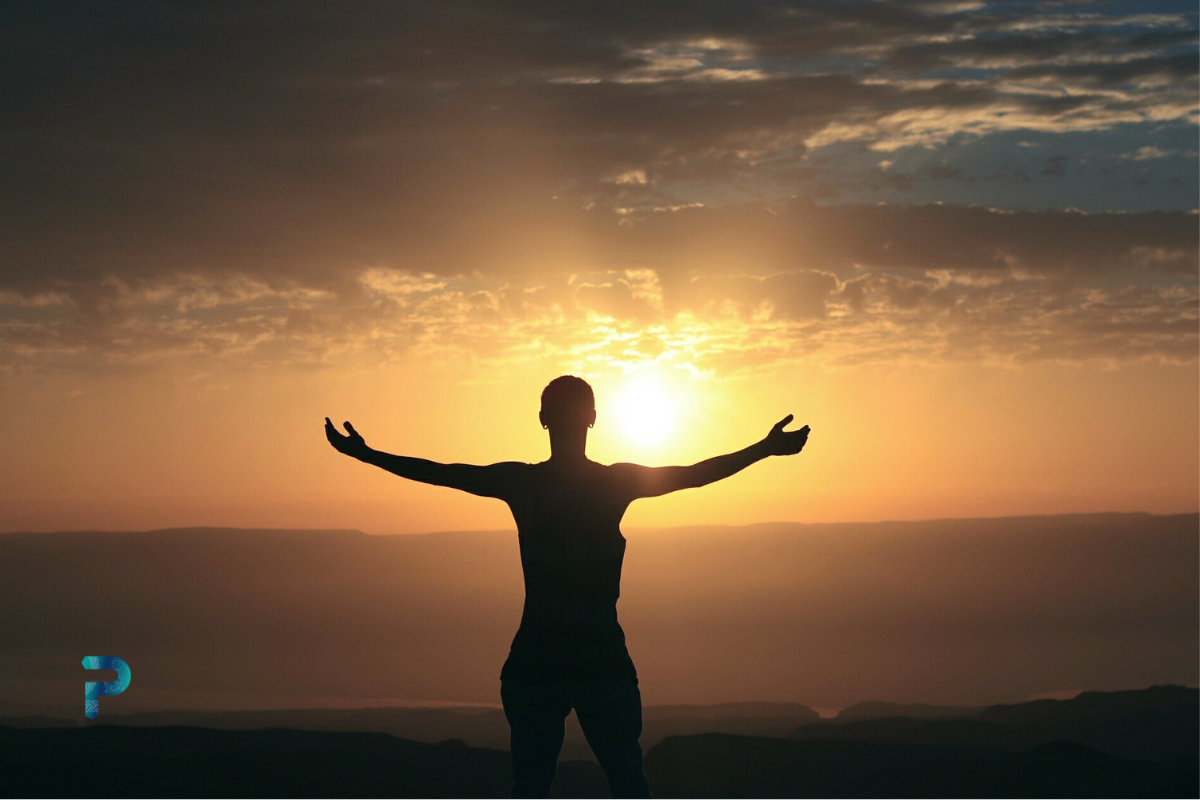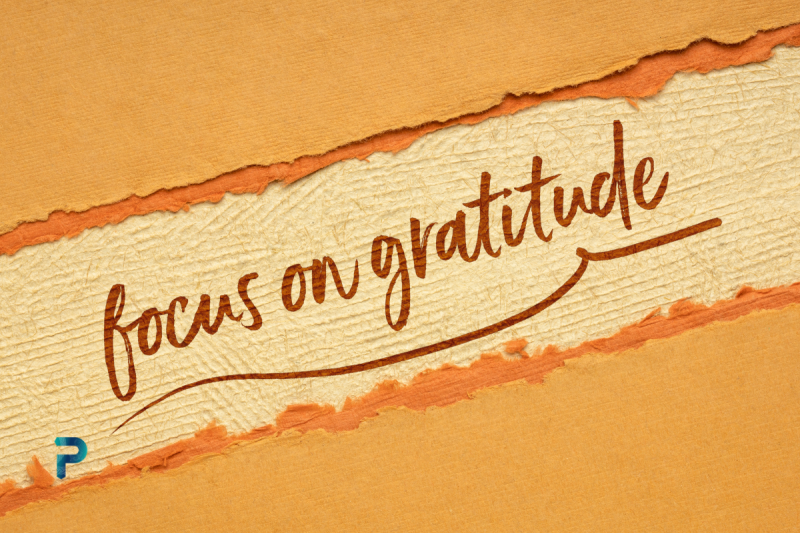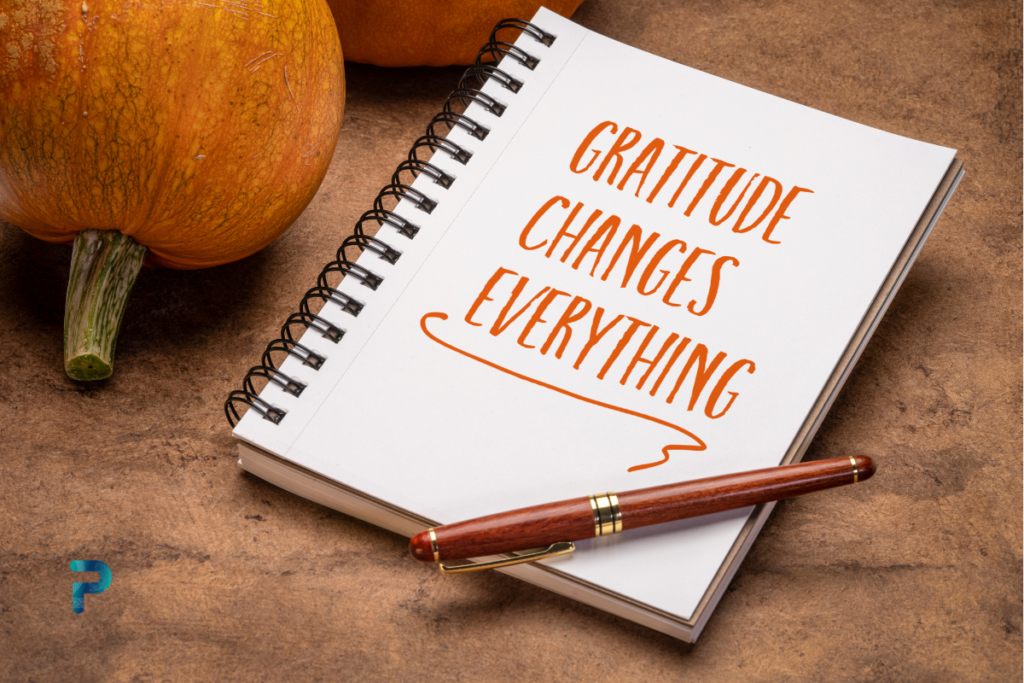
One of the simplest yet most effective strategies for enhancing mental well-being, cultivating mindfulness, and achieving more pleasure is gratitude. We turn our attention from what we lack to what we have when we deliberately cultivate thankfulness.
This change in viewpoint enhances our mental resilience and creates a greater sense of satisfaction. We’ll discuss the life-changing power of thankfulness in this blog article, along with five activities to help you develop this beneficial habit.

Why Gratitude is Essential for Mental Health and Well-Being
Saying “thank you” is not the only expression of gratitude. It is a way of thinking and seeing the world that has a profoundly positive effect on mental health. Studies in neuroscience and psychology consistently show that gratitude:
- enhances emotional health by reducing depressive and anxious feelings.
- keeps you rooted in the here and now by promoting awareness.
- builds a stronger sense of connection, which in turn strengthens relationships.
- encourages resilience in trying situations, assisting you in overcoming hardship.
- enhances physical health by strengthening the immune system, reducing stress, and improving sleep quality.
To put it briefly, being thankful is essential to happiness and wellbeing. It promotes an optimistic attitude and inner peace when integrated into daily living.
The Science Behind Gratitude and Happiness
Gratitude activates the brain’s reward system, releasing dopamine and serotonin—neurotransmitters associated with pleasure and well-being.
It also reduces activity in the amygdala, the part of the brain responsible for stress and fear. This means that practicing gratitude rewires your brain to focus on positivity and reduces the impact of negative emotions.
Mindfulness and gratitude go hand in hand. While mindfulness encourages awareness of the present moment, gratitude enriches that awareness with a sense of appreciation.
Together, they create a powerful synergy that boosts overall happiness.
Five Gratitude Exercises to Boost Happiness and Mindfulness
Integrating gratitude into your daily routine doesn’t have to be complicated. These simple exercises can help you cultivate thankfulness and enhance your mental health.

- The Gratitude Journal
A gratitude journal is one of the most effective tools for fostering mindfulness and happiness.
Instructions:
- Dedicate 5–10 minutes each day to writing in your gratitude journal.
- List 3–5 things you’re grateful for. Be specific—describe why these things bring you joy or comfort.
- Example: Instead of writing “I’m grateful for my family,” you might say, “I’m grateful for the laughter I shared with my sister over a funny memory.”
- Reflect on your entries at the end of the week to deepen your sense of appreciation.
Why it works: Writing about gratitude trains your brain to focus on positive experiences, fostering a mindset of abundance.

- Gratitude Meditation
Combining gratitude with meditation deepens your mindfulness practice and enhances emotional well-being.
Instructions:
- Find a quiet space where you can sit comfortably.
- Close your eyes and take several deep breaths to center yourself.
- Visualize something or someone you’re grateful for. Imagine the details of this experience or relationship—what it looks, feels, and sounds like.
- With each breath, silently say “thank you” for this blessing.
- Spend 5–10 minutes in this meditative state.
Why it works: Gratitude meditation aligns your mind with positive emotions, calming the nervous system and increasing happiness.

- The Gratitude Jar
This fun and creative exercise is perfect for families, couples, or individuals who enjoy tangible reminders of their blessings.
Instructions:
- Find a jar and decorate it to make it special.
- Each day, write down something you’re grateful for on a small piece of paper.
- Add the note to the jar.
- At the end of the month, empty the jar and read through all the notes as a mindfulness practice.
Why it works: The gratitude jar provides a visual reminder of positivity, reinforcing a habit of appreciation.

- Gratitude Walk
A gratitude walk combines the benefits of physical exercise with mindfulness and appreciation.
Instructions:
- Choose a peaceful location, such as a park or quiet street.
- As you walk, focus on your surroundings. Notice the sights, sounds, and smells.
- For every few steps, think of something you’re grateful for—nature, health, family, or even the ability to take the walk itself.
- Maintain a steady, mindful pace and allow yourself to be fully present in the moment.
Why it works: A gratitude walk grounds you in the present moment while boosting both mental and physical well-being.

- Writing a Gratitude Letter
Expressing your appreciation to others strengthens your relationships and enhances your happiness.
Instructions:
- Think of someone who has positively impacted your life—a friend, mentor, or family member.
- Write them a heartfelt letter, detailing why you’re grateful for them and how they’ve enriched your life.
- If possible, deliver the letter in person or over a call. Witnessing their reaction can deepen the emotional impact of this exercise.
Why it works: A gratitude letter fosters connection, reduces loneliness, and amplifies feelings of joy for both writer and recipient.
Tips for Maintaining a Gratitude Practice
Sticking to a gratitude routine can be challenging at first, but with consistency, it becomes second nature. Here are a few tips to stay on track:
- Set a daily reminder: Incorporate gratitude into your morning or evening routine.
- Make it social: Share your gratitude practice with a friend or loved one to stay motivated.
- Be patient: Building a habit takes time. Start small, and don’t be discouraged if it feels awkward initially.
- Celebrate progress: Acknowledge how gratitude has improved your mental health, mindfulness, and happiness.
Embracing Gratitude for a Mindful, Joyful Life
Practicing gratitude is a potent, life-changing activity that promotes mindfulness, mental wellness, and lasting happiness. You can retrain your brain for happiness and have a fuller, more rewarding life by practicing thankfulness every day.
These activities can assist you in realising the full benefits of appreciation, regardless of whether you’re just beginning your gratitude journey or want to improve your practice. Find out how thankfulness may open up a world of happiness, connection, and inner serenity by starting now.
For what do you feel thankful today? To spread the power of gratitude, share this article and let us know in the comments section below.

